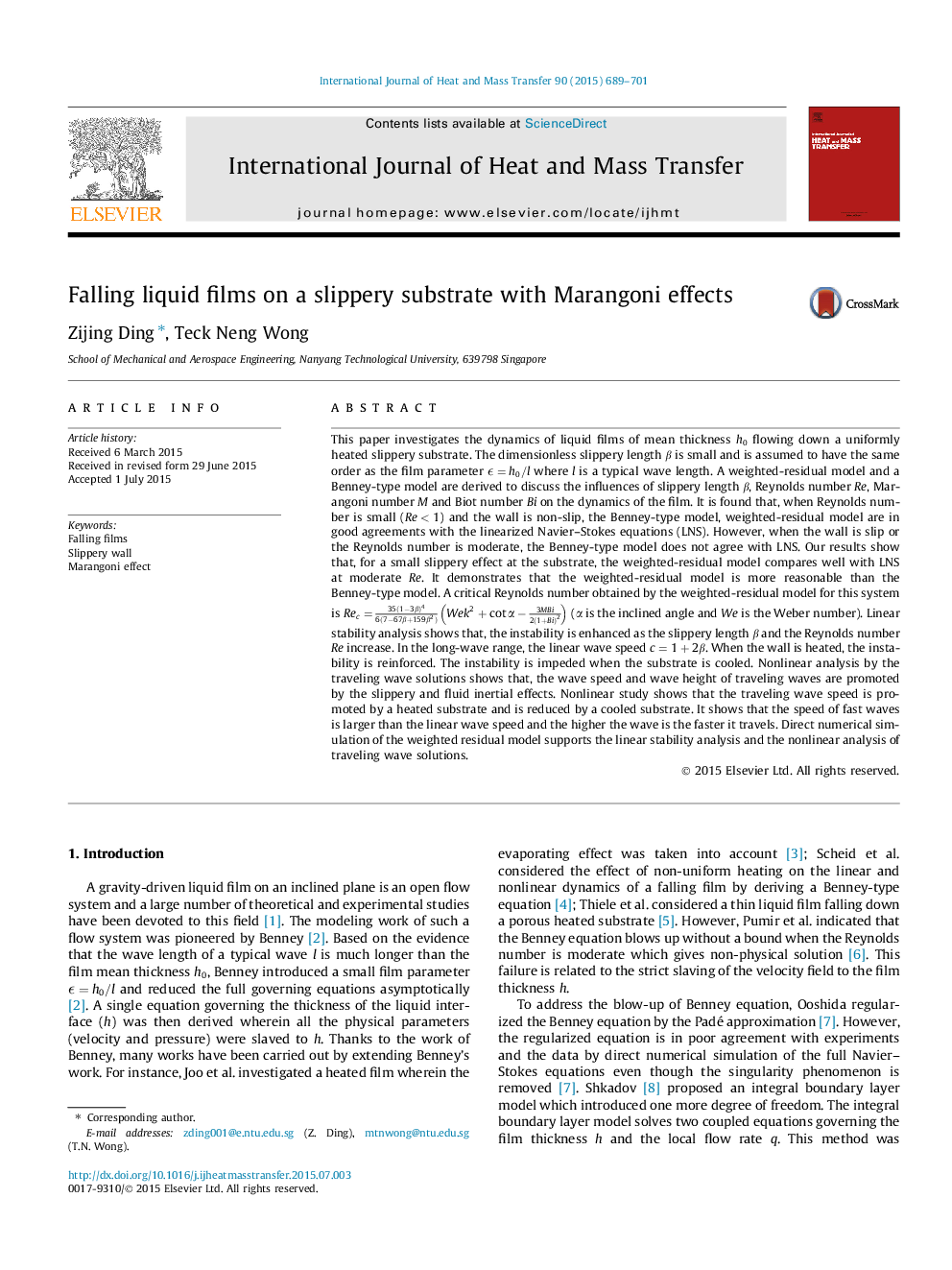| Article ID | Journal | Published Year | Pages | File Type |
|---|---|---|---|---|
| 7056525 | International Journal of Heat and Mass Transfer | 2015 | 13 Pages |
Abstract
This paper investigates the dynamics of liquid films of mean thickness h0 flowing down a uniformly heated slippery substrate. The dimensionless slippery length β is small and is assumed to have the same order as the film parameter â=h0/l where l is a typical wave length. A weighted-residual model and a Benney-type model are derived to discuss the influences of slippery length β, Reynolds number Re, Marangoni number M and Biot number Bi on the dynamics of the film. It is found that, when Reynolds number is small (Re<1) and the wall is non-slip, the Benney-type model, weighted-residual model are in good agreements with the linearized Navier-Stokes equations (LNS). However, when the wall is slip or the Reynolds number is moderate, the Benney-type model does not agree with LNS. Our results show that, for a small slippery effect at the substrate, the weighted-residual model compares well with LNS at moderate Re. It demonstrates that the weighted-residual model is more reasonable than the Benney-type model. A critical Reynolds number obtained by the weighted-residual model for this system is Rec=35(1-3β)46(7-67β+159β2)Wek2+cotα-3MBi2(1+Bi)2 (α is the inclined angle and We is the Weber number). Linear stability analysis shows that, the instability is enhanced as the slippery length β and the Reynolds number Re increase. In the long-wave range, the linear wave speed c=1+2β. When the wall is heated, the instability is reinforced. The instability is impeded when the substrate is cooled. Nonlinear analysis by the traveling wave solutions shows that, the wave speed and wave height of traveling waves are promoted by the slippery and fluid inertial effects. Nonlinear study shows that the traveling wave speed is promoted by a heated substrate and is reduced by a cooled substrate. It shows that the speed of fast waves is larger than the linear wave speed and the higher the wave is the faster it travels. Direct numerical simulation of the weighted residual model supports the linear stability analysis and the nonlinear analysis of traveling wave solutions.
Keywords
Related Topics
Physical Sciences and Engineering
Chemical Engineering
Fluid Flow and Transfer Processes
Authors
Zijing Ding, Teck Neng Wong,
